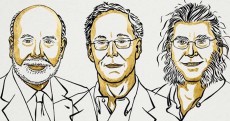
Benjamin Mueller, The New York Times
05 October, 2022 17:10
Nobel Prize Awarded to Scientist Who Sequenced Neanderthal Genome
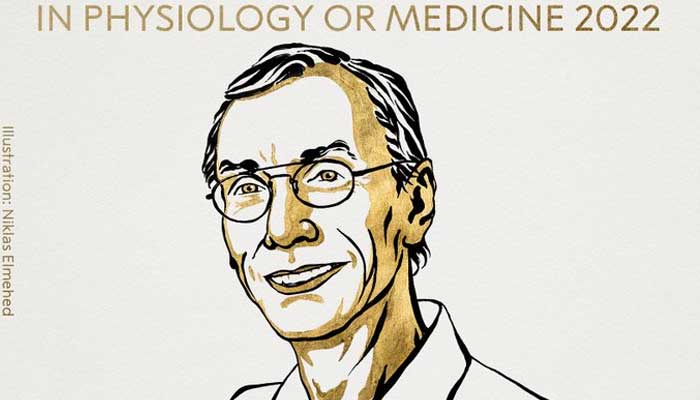
Svante Pääbo, a Swedish scientist who peered back into human history by retrieving genetic material from 40,000-year-old bones, producing a complete Neanderthal genome and launching the field of ancient DNA studies, was awarded the Nobel Prize in Physiology or Medicine on Monday.
The prize recognized an improbable scientific career. Having once dreamed of becoming an Egyptologist, Dr. Pääbo devoted his early years of research to extracting genetic material from mummies, only for that research to run aground because the samples might have become contaminated by his and his colleagues’ own DNA.
Within about two decades, in 2006, he had launched an unlikely effort to decipher a Neanderthal genome. He designed so-called clean rooms dedicated to handling ancient DNA, which protected his fossils from the genetic material of living humans. And dramatic advances in sequencing technology allowed him to decode the sort of badly damaged DNA found in ancient bones.
“It was certainly considered to be impossible to recover DNA from 40,000-year-old bones,” said Dr. Nils-Göran Larsson, the chairman of the Nobel Committee for Physiology or Medicine and a professor of medical biochemistry at the Karolinska Institute in Stockholm.
In 2010, Dr. Pääbo unveiled the Neanderthal genome. The publication opened a window into questions about what made early humans different from modern ones. It also helped scientists track genetic differences in modern humans and understand what role those differences play in disease, including Covid-19. In 2020, Dr. Pääbo and a colleague found that the coronavirus caused more severe symptoms in people who had inherited a stretch of Neanderthal DNA.
Even some of Dr. Pääbo’s biggest admirers described the prize as unexpected. Analysts have long speculated that the scientists who sequenced the modern human genome were strong contenders for a Nobel Prize, not thinking that the scientist who sequenced Neanderthal DNA would get there first.
But geneticists said that the two projects were interwoven: Rapid advances in sequencing technology that followed the beginning of the Human Genome Project in 1990, they said, helped Dr. Pääbo to interpret tiny quantities of Neanderthal DNA, damaged as they were from tens of thousands of years underground.
“There’s a lot of Human Genome Project fingerprints all over the research,” said Dr. Eric Green, director of the National Human Genome Research Institute at the U.S. National Institutes of Health. Still, Dr. Green said, it was left to Dr. Pääbo to retrieve clean samples, to sift through the DNA left by bacteria that had colonized the bones and to analyze the resulting fragments of Neanderthal DNA.
“He ends up with tons of snippets from Neanderthal bone,” Dr. Green said. “Then it’s, ‘How do you put that jigsaw puzzle back together?’”
Once Dr. Pääbo cleared away the bacterial DNA, dealt with the damage to the Neanderthal genes, analyzed the sequences and ultimately reassembled the genetic jigsaw puzzle, the picture that emerged was staggering.
There was already archaeological evidence that before Neanderthals disappeared about 30,000 years ago, they had lived in Europe and Asia beside the ancestors of modern humans, who had migrated there from Africa. But the prevailing belief was that modern humans were so distinctive that they had not had children with Neanderthals. (Modern humans and Neanderthals share a common ancestor that lived some 600,000 years ago.)
Analyses of the Neanderthal genome by Dr. Pääbo and his colleagues overturned that belief, showing that modern humans and Neanderthals interbred all the time, said David Reich, a geneticist specializing in ancient DNA at Harvard Medical School who worked with Dr. Pääbo on sequencing the genome.
“We’re alone in the world right now — we don’t have these other archaic humans living with us,” Dr. Reich said. “Only 50 to 60 thousand years ago, we mixed with them whenever we could.”
That mixing left a strong genetic imprint. The research team found that people currently living in Europe and Asia derive one percent to four percent of their genomes from Neanderthals. There is no record of Neanderthals in Africa, meaning that they did not directly contribute to the genomes of people there, but scientists believe that other early human species probably did.
Dr. Pääbo, a director at the Max Planck Institute for Evolutionary Anthropology, went on to use the techniques he had developed to sequence the Neanderthal genome to study other evolutionary relatives.
In 2008, Dr. Pääbo’s team retrieved DNA from a finger bone found in a Siberian cave and learned that it had belonged to an undiscovered ancient human population, later named the Denisovans. That genome had also left its signature in some modern humans: Gene variants that help modern Tibetans live at high altitude, Dr. Pääbo found, may be derived from Denisovans.
Results from those studies not only created a new map of human migration, but also offered evidence of considerable mixing between groups in distant human history, Dr. Reich said.
“It’s profoundly changed many people’s understandings of human history,” he said. “The racist myths of purity just don’t stand up to the data, which proves how central mixture and migration are to our past.”
The question of what makes modern humans unique, among the most fundamental raised by Dr. Pääbo’s research, remains difficult to untangle. His research identified genetic variants that are common among living humans but absent in Neanderthals, offering a sort of blueprint for the set of mutations that distinguish them from modern humans.
But scientists have not yet linked those mutations to modern human traits, such as the capacity for figurative art, complex cultures, large social collaborations and advanced innovation.
That has not slowed a boom in studies of ancient DNA in recent years. Some scientists have attributed this partly to the vast network of geneticists whom Dr. Pääbo has trained and invited into collaborations over the years.
“When we have a meeting, he can inspire a whole group to continue working in the lab until late hours,” said Dr. Hugo Zeberg, a geneticist at the Karolinska Institute who studies the link between genetic variability and disease. “This is an amazing colleague.”
Among the research that has grown out of Dr. Pääbo’s work was the finding by him and Dr. Zeberg in 2020 that people with a stretch of DNA passed down from Neanderthals 60,000 years ago were at greater risk of severe illness from the coronavirus.
Knowing that people with Neanderthal ancestry are at greater risk for a disease can help to distinguish populations that are in more danger, Dr. Zeberg said. In the case of the genes implicated in severe Covid, almost one-third of people in South Asia were known to have inherited that segment of the Neanderthal genome.
Other colleagues of Dr. Pääbo’s are now trying to fill in the gaps of human genetic history by sequencing the genomes of humans who have lived in the last 10,000 years. Dr. Reich said that he and other scientists were also trying to study more samples from Africa and the Americas, where the climate is often less friendly to preserving genetic material.
For his part, Dr. Pääbo said at a news conference on Monday that despite the hoopla around the prize, he hoped that “we can continue to work calmly and without being disturbed by too many journalists.”
He has a bit of Nobel Prize history in his own family: In a 2014 memoir, “Neanderthal Man,” he wrote that he was “the secret extramarital son of Sune Bergstrom, a well-known biochemist who had shared the Nobel Prize in 1982.” But he said that scarcely prepared him for winning the prize himself.
Dr. Pääbo said that his focus remained on the genetic changes that explain why modern humans became so populous and formed such large societies.
“What really drives our work is really curiosity,” he said. “It is just as if you do an archaeological investigation to find out about the past. We sort of make excavations in the human genome.”


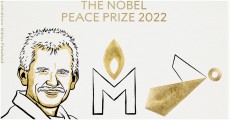
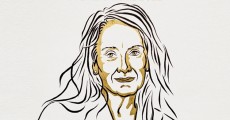
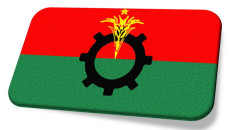

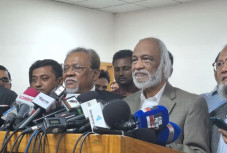



 সিলেটে আ. লীগ নেতা খুন: ছেলেকে রিমান্ডে চায় পুলিশ, সন্দেহে আরও কয়েকজন
সিলেটে আ. লীগ নেতা খুন: ছেলেকে রিমান্ডে চায় পুলিশ, সন্দেহে আরও কয়েকজন 




 IT Lab Solutions Ltd.
IT Lab Solutions Ltd.
আপনার মন্তব্য